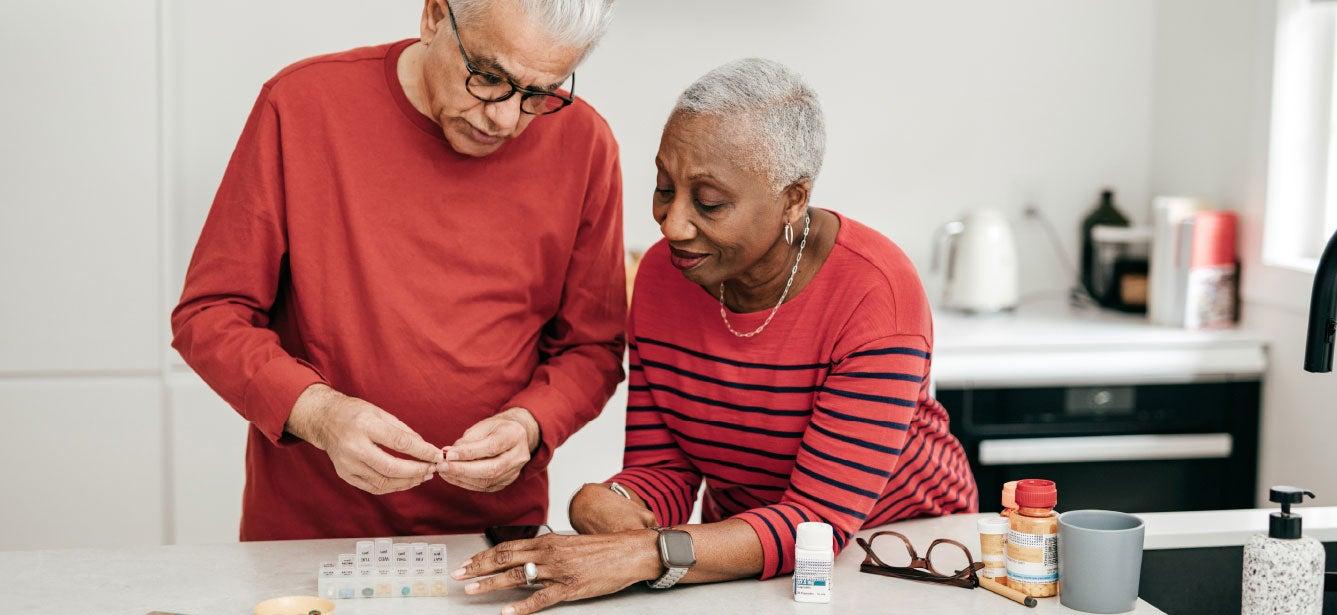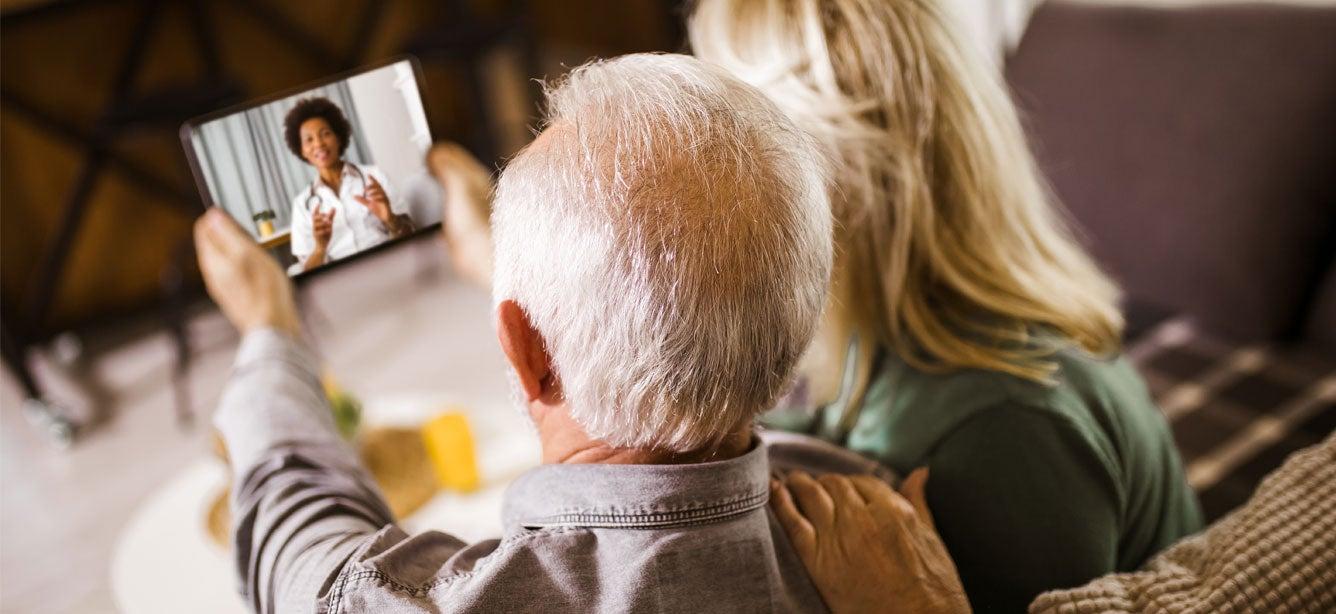Safe Pain Relief for Older Adults: Effective Tools and Solutions
6 min read

Pain is one of the most widely cited symptoms underlying disability among older adults.1 NCOA, in collaboration with local organizations, conducted a pilot project to empower older adults and caregivers improve their quality of life through safe and effective pain management.
The NCOA Wellness and Pain Relief Program™ focused on:
- Setting personal goals
- Using resources and tools for safe use of medications
- Connecting to pharmacists as credible resources
The project was based on evidence that shows support groups and peers can play a valuable role in managing pain safely.2 It also focused on looking at what matters to the individual, assessing life satisfaction and well-being.
Snapshot of the pain relief pilot program
NCOA selected three pilot sites located in states with high misuse of over-the-counter pain medicine, including acetaminophen. Collaborators in these states (Illinois, Washington, and Florida) had experience in delivering health promotion programs and the ability to reach older adults. Class leaders were certified or trained in delivering evidence-based programs. Classes were delivered in person, as a hybrid or remotely via Zoom.
Each site was provided with materials for the 6-week program including:
- Marketing flyer
- Facilitator curriculum and instructional notes
- Participant guides
- Links to tools and resources
Leaders also received two hours of training and ongoing support during program delivery.
Components of the pain relief pilot program
The program was made up of six modules with content and activities for a 60-minute session. The activities were designed to facilitate support groups and peer interaction, encourage behavior change through taking small steps, and focus on what matters to the individual.
Each person has unique needs, wants, and expectations when it comes to managing pain effectively. Setting personal and physical goals was a key part of the program.
Goal-setting is an effective behavior change technique. The program guided participants in setting goals to improve their quality of life through better pain relief.
Participants also discussed the role of reliable sources for information in understanding pain and either visited a local pharmacy and/or met with a pharmacist remotely during one of the classes. Pharmacists continue to play an important role in health promotion across the community, especially during the pandemic.3
“Pharmacists are practitioners who come into contact with patients sometimes even more than physicians,” said Kathleen Cameron, former Senior Director, NCOA Center for Healthy Aging, and a trained pharmacist. “They help older adults by answering questions about managing their medications safely and can recommend steps to avoiding harmful medication interactions.”
The pharmacy tour helped participants:
- Locate the pain relief section in the pharmacy.
- See examples of some of the items discussed during the program.
- Speak with the pharmacist and consult them for general advice.
Throughout the program, the content was designed to increase participants’ decision-making ability, find the approach that’s right for individuals, and relieve pain with the right tools, credible information, and easy-to-use resources.
How the program helped older adults manage pain safely and successfully
There were several positive outcomes of the 6-week program. Respondents increased their ability to understand their pain during the classes and reported achieving goals. In addition:
- Knowledge of pain management increased
- Overall reported pain decreased
Behavior modification techniques were also adopted by program participants, including:
- Incorporating more physical stretches into routines
- Using relaxation techniques at least 2-3 times weekly
- Getting more restful sleep
Several participants also reported cleaning out old, expired medicines.
Pain relief program delivery sites gave the program high marks
Each delivery site reported that they view the delivery of a pain management intervention as a critically important effort in helping to improve quality of life of older adults in their community. Leaders reported that participants benefited from taking the workshop to a large extent, and all would be very likely or likely to recommend the program. All three sites said they would offer the class again and that it was a good investment of their time. They reported their favorite aspect of the program was how the curriculum helped stimulate dialogue, because having a chronic pain condition can be a lonely experience, and older adults do not normally have a forum to discuss pain.
One Florida-based leader noted, “Students loved learning from each other. A true bond developed among them.”
The program was also described as a great supplement to those who have previously taken the Chronic Pain Self-Management (CPSMP) workshop originally developed at Stanford University.
What can an older adult learn from this pain management program?
The findings from this pilot program can help all older adults and caregivers in addressing safe and effective pain management. Some action items you anyone can take today:
1. Set goals for personal and physical health. Don’t know where to start? Here are some examples from the pilot program participants.
- Personal Goals
- Be able to walk further.
- Do more gardening.
- Sleep better
- Be able to play and interact with my dogs more.
- Practice meditation.
- Physical Goals
- Improve balance and flexibility.
- Play pickleball weekly.
- Use the gym at the senior center for 30 minutes twice a week.
- Walk 5-10 minutes at least 3 times per week.
2. Locate the pain relief section in the pharmacy and speak with the pharmacist. Pharmacists are a credible resource to help with pain management.
3. Leverage digital resources
- Test your OTC knowledge quiz | Get Relief Responsibly®
- https://ncoa.org/age-well-planner/assessment/falls-free-checkup/
How can community-based organizations and program administrators help with pain relief?
If you are interested in specific information about the NCOA Wellness and Pain Relief Program, reach out to healthyaging@ncoa.org. While the program is not widely available yet, there are lessons that can be applied to your programs such as:
- Participatory curriculum is an effective way to engage and empower older adults.
- Community resources, including pharmacy and pharmacist, can support your participants.
- Leverage the many NCOA resources posted online, such as how medication safety can protect your loved ones or tips for managing arthritis hand pain when cooking .
What is next for the pilot pain relief program?
All three sites encouraged NCOA to take the program, with some recommended modifications, to full-scale delivery. NCOA will continue to enhance and research the effectiveness of the curriculum and examine program structure. We will continue to promote additional information about tools and solutions for safe pain relief with more community activation and national demonstration projects in the coming months.
Acknowledgements
We greatly appreciate the participation and feedback received from our three pilot sites:
Funding for this pilot project was made possible by a grant from Johnson and Johnson, Inc.
Sources
1. Susan G Leveille, et al. Disabling Symptoms: What Do Older Women Report? J Gen Intern Med. 2002 Oct; Found on the internet at https://pubmed.ncbi.nlm.nih.gov/12390552/
2. Vanitha Subramaniam et al. The Development and Impact of a Chronic Pain Support Group. Journal of Pain and Symptom Management. May 1999. Found on the internet at https://www.jpsmjournal.com/article/S0885-3924(99)00012-3/fulltext
3. Karlee Johnson et al. The burden of COVID-19 on pharmacists. Journal of the American Pharmacists Association. Oct. 21, 2020. Found on the internet at https://www.japha.org/article/S1544-3191(20)30528-8/fulltext



